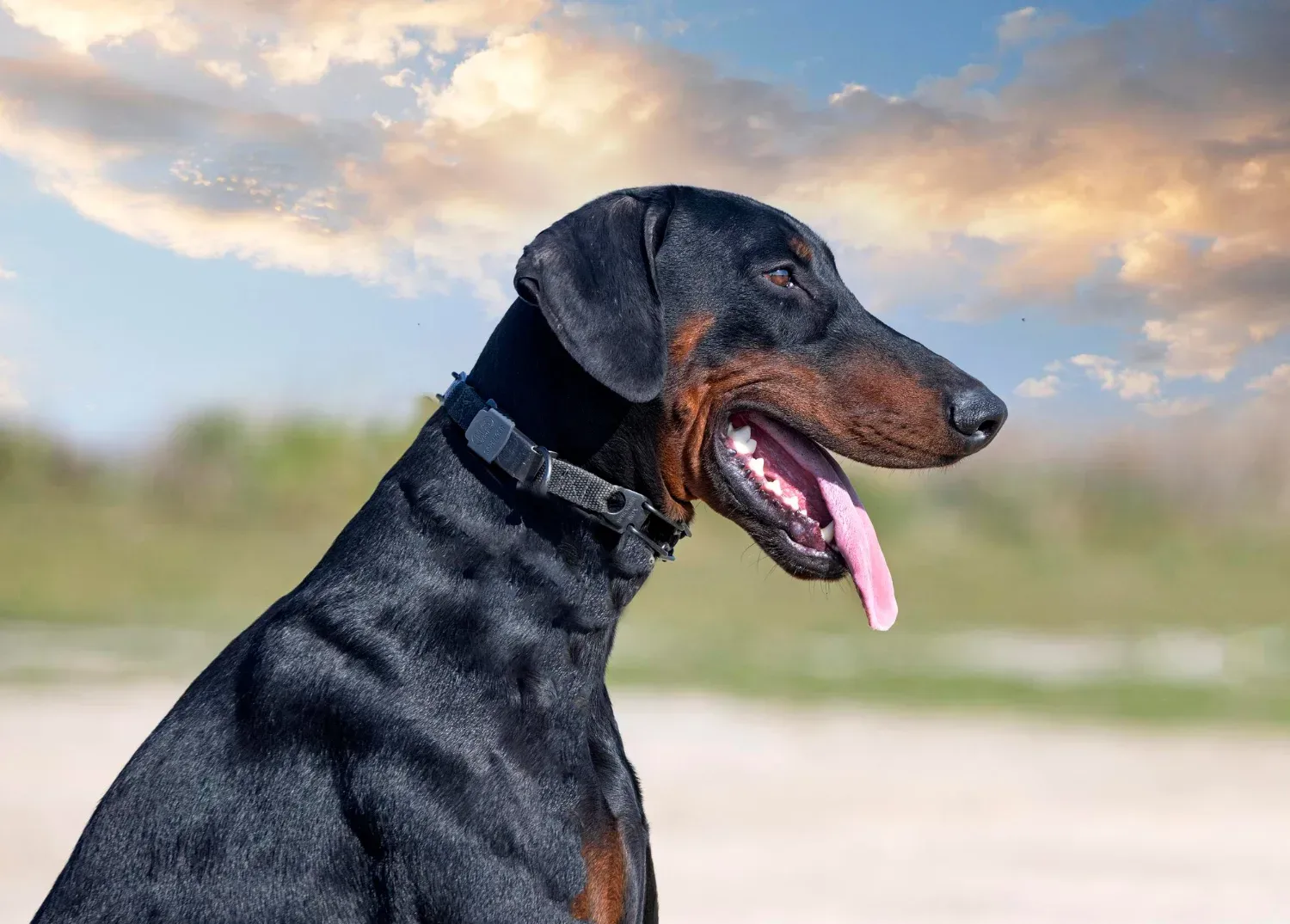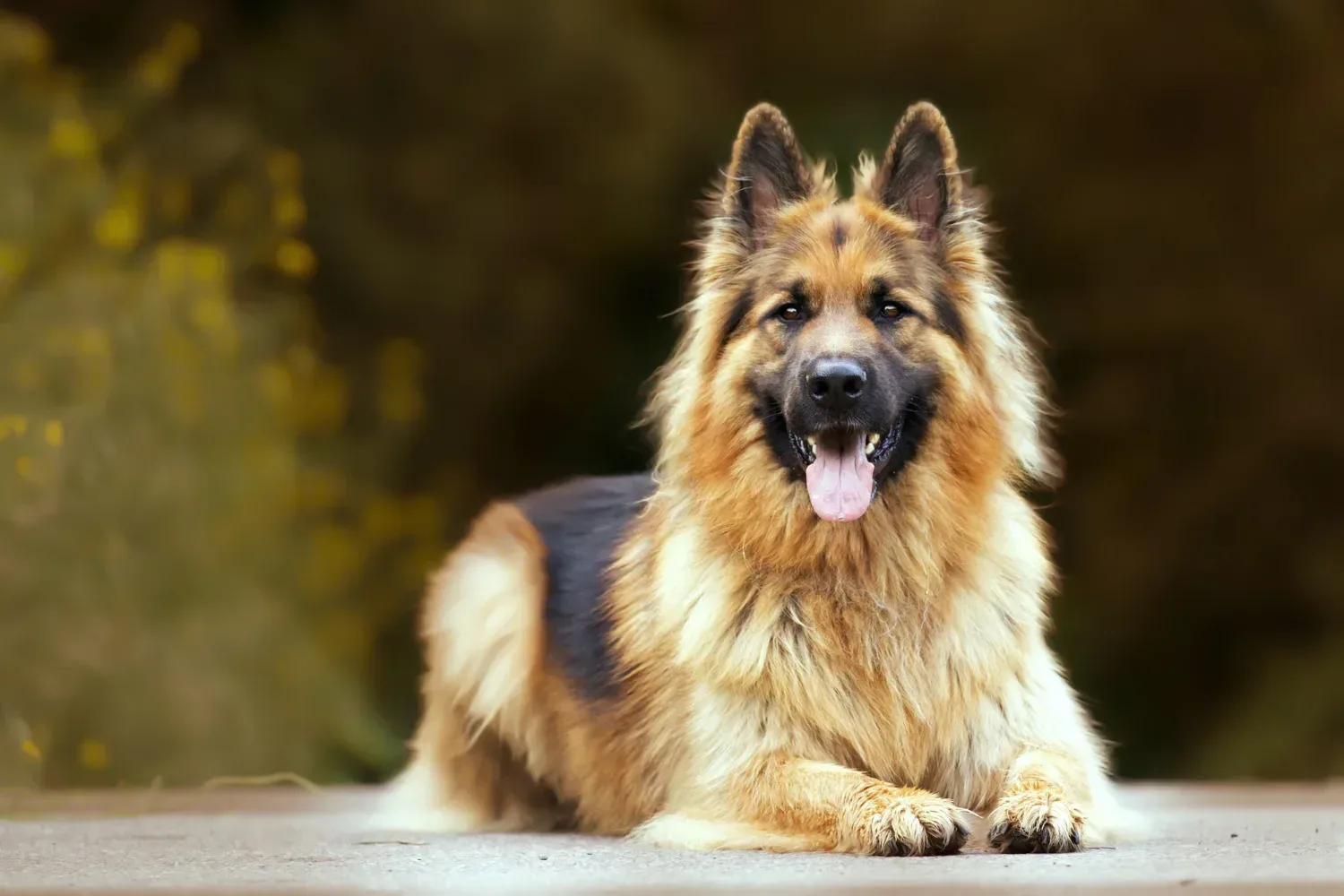
All about doberman pinscher – dog breed
If you’re looking for a medium-sized dog with a compact, square build, the Doberman Pinscher is the dog breed for you. This dog’s head is shaped like a blunt wedge, with a flat skull that tapers slightly into a long, narrow muzzle. Their almond-shaped eyes are various shades of brown, depending on the coat color. They are a highly intelligent dog and are known for their willingness to please their owners.
Doberman pinscher characteristics
One of the Doberman pinscher characteristics is its high energy level. This small hound has a smooth coat, an athletic build, and regal looks. Because of their high energy level, they are popular with guard dogs and canine sports enthusiasts. In fact, Doberman pinschers were the first dogs bred specifically to flush wild animals. During World War II, the Doberman pinscher’s population dropped significantly.
Aside from their energy levels, Dobermans require daily exercise. They should be socialized from a young age, as they become easily bored. Likewise, they should never be chained up, as they experience separation anxiety if left alone for long periods of time. Therefore, planning and preparation are essential in preventing separation anxiety in Dobies. Make sure that there are plenty of places for Dobies to be alone, and avoid tying them up.
The Doberman pinscher has medium-sized body measurements. A female’s height should be between 61 and 68 centimetres, while a male’s should stand at 66-72 centimetres at the shoulder. They have square-framed bodies, with a long, square head proportional to the rest of their body. Their ears are set high on the skull. If they are unclipped, they are V-shaped and lie close to the head.
The Doberman has a short double coat. The hair is silky and thick, and the undercoat is sometimes gray or black. They shed moderately year-round, but do not overgroom. Only four colors are permitted for show. Blue is close to steel gray, black and rust are the most common. This breed is also very energetic and alert. A Doberman has high energy levels. It is also loyal and obedient.
Doberman pinscher ancestry
While we don’t know the exact ancestry of Doberman pinschers, we can get a rough idea of what our ancestors were like. Our dogs share many characteristics, including the same immune system genes. While some breeds may be more prone to DCM than others, we can make sure our dogs have a healthy immune system by examining their ancestry.
There are no definitive records of who was responsible for creating the Doberman pinscher, but many people believe that the breed traces back to the Old German Shepherd and the German pinscher. However, the Germans and British did drop the pinscher name 50 years later. Some believe the Doberman’s ancestry is much more diverse, with influences from various terriers and herding dogs. The Doberman pinscher’s streamlined shape may have originated from the Manchester terrier.
In addition to their German shepherd ancestry, the Doberman pinscher has an impressive ancestry. Its ancestry includes the English Greyhound and Beauceron. The breed came into being in the late 1800s, when Louis Dobermann traveled through dangerous regions for his job. To protect his family, he needed a watchdog. The result was the breed we know today.
The Doberman pinscher is known as the “velcro” dog, and has the potential to develop separation anxiety when not properly socialized. This breed’s ancestry goes back to Louis Dobermann, a tax collector in Apolda, Germany. Louis Dobermann, a dog breeder, aimed to create a dog that could be used as a watchdog. A watchdog suited for the watcher role is a powerful dog.
Doberman pinscher health
While the exact cause of von Willebrand’s disease is unknown, it is known to affect 60 percent of Doberman Pinschers. The disease affects about one in every three Dobermans at some point in their lives. It has an autosomal dominant inheritance and no known causes. Most dogs die of this fatal disorder during their prime years. However, there are ways to reduce the risk and prevent its occurrence.
Doberman Pinschers are vulnerable to several heart problems. Dilated cardiomyopathy, for instance, is a life-threatening condition in which the heart is enlarged and weak. Signs may include weakness, collapse, coughing, and abnormal heart rhythm. Electrical heart screening can detect abnormal heart rhythms as early as one year of age, and treatment may involve dietary supplements or medication. Although some of these conditions are hereditary, some can be prevented or cured.
Wobblers Syndrome is another condition that can affect Dobermans. It is caused by the jelly-like cushion between the vertebrae slipping. If the disc is damaged, it can press on the spinal cord, resulting in severe pain and even paralysis. If left untreated, bloat can be fatal in 30 minutes. Affected dogs may be restless or sit in the prayer position. A veterinarian can use stomach tacks to help prevent the condition.
Besides this disease, there are other causes for ill-effects in Doberman Pinschers. Copper hepatitis is one of them. If not treated at an early age, it can lead to liver failure. Symptoms usually appear as jaundice in dogs two to four years of age. It is therefore vital to perform tests early on to detect the problem. If your dog is suffering from copper hepatitis, it’s best to seek veterinary care.
Doberman pinscher ear cropping
While ear cropping is a common procedure for dogs, it does have its risks. While it has no proven medical benefits, many dog owners find that this procedure is aesthetically pleasing. Many pedigree owners prefer the softer appearance of their dogs. It should be noted that this type of surgery requires aftercare. Dobermans with ear cropping are not considered high-risk dogs. But they are not the only breed that benefits from the procedure.
Doberman pinscher ear cropping has become a source of controversy over the past twenty years. It was previously used for working dogs, shepherds, and hunting dogs. However, ear cropping is considered unethical in Europe, where animal welfare standards are much stricter than in the United States. As such, ear cropping has become restricted in Europe and is banned entirely in some states. Fortunately, the United States does not have any laws against this procedure.
Depending on your dog’s breed, your veterinarian may recommend ear cropping to prevent infection. While it can be performed at any age, the procedure is often accompanied by a painful recovery period. Afterward, the ears must be taped for a few weeks or even a year. The taped ears need to be examined by a veterinarian to ensure a proper result. A veterinarian can make a recommendation based on experience and recommended age. If you’re unsure of the procedure, you may opt to skip it.
The purpose of ear cropping in the Doberman pinscher is largely practical. Cropped ears can catch on branches when the dog is running in the woods. However, this surgery can be painful for the dog and is not recommended for puppies. In some countries, tail docking is illegal, so it is best to check with a veterinarian before having it performed. But if your dog is not a rogue, you should consider the benefits and risks of ear cropping.
Doberman pinscher tail docking
Doberman pinscher tail docking is a very common procedure that many dog owners opt for. This procedure is often performed when the dog is just a week or so old, but some breeders will dock the tail as late as seven days. While young puppies do not experience pain from the procedure, it is important to note that a docked tail will grow back on its own in a few days. Some breeders choose to wrap the tail in a tight band to avoid it falling off, but this method does not guarantee a longer-lasting effect.
If you’re considering getting a Doberman Pinscher puppy, it’s important to keep in mind that tail docking is not a simple procedure. Performing this surgery as an adult can be painful and may not be done if you’re not willing to pay a veterinarian’s fee. However, the procedure can be done as a puppy at a very young age and will result in excellent aesthetic results.
There are many reasons to dock a Doberman pinscher’s tail, and some people do it for cosmetic reasons. Traditionally, tail docking was done to avoid injuries during work. However, today, more people are opting for long tails. There are many benefits to tail docking, but it’s important to remember that you can leave the tail as it is if you want it to be more elegant.
In general, tail docking reduces the risk of matting and makes cleaning easier. If you have a large, beautiful Doberman pinscher available for adoption, you’ll probably want to consider docking it as well. It will increase the likelihood of a fast adoption. If your pup is docked, it will also attract more attention, which means more prospective homes for him. So, why should you dock your Doberman’s tail?


